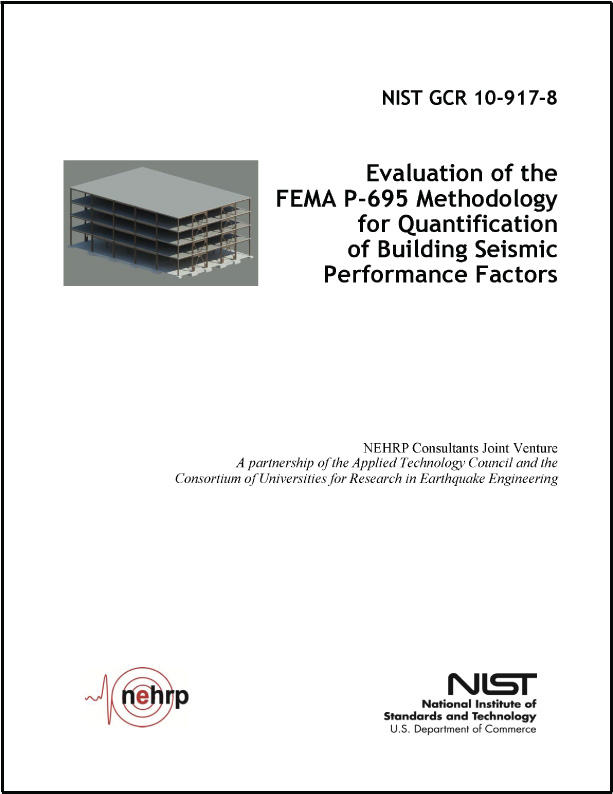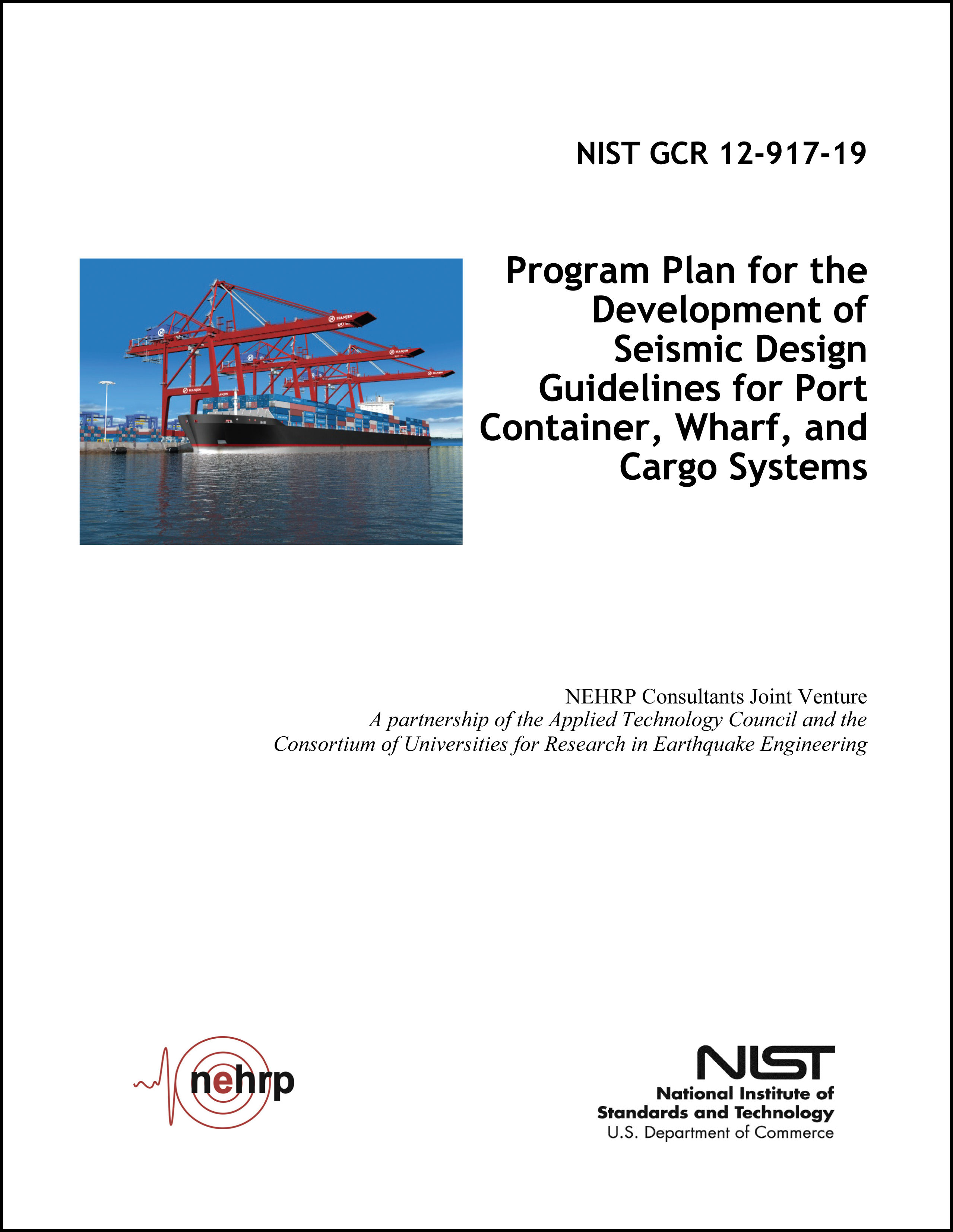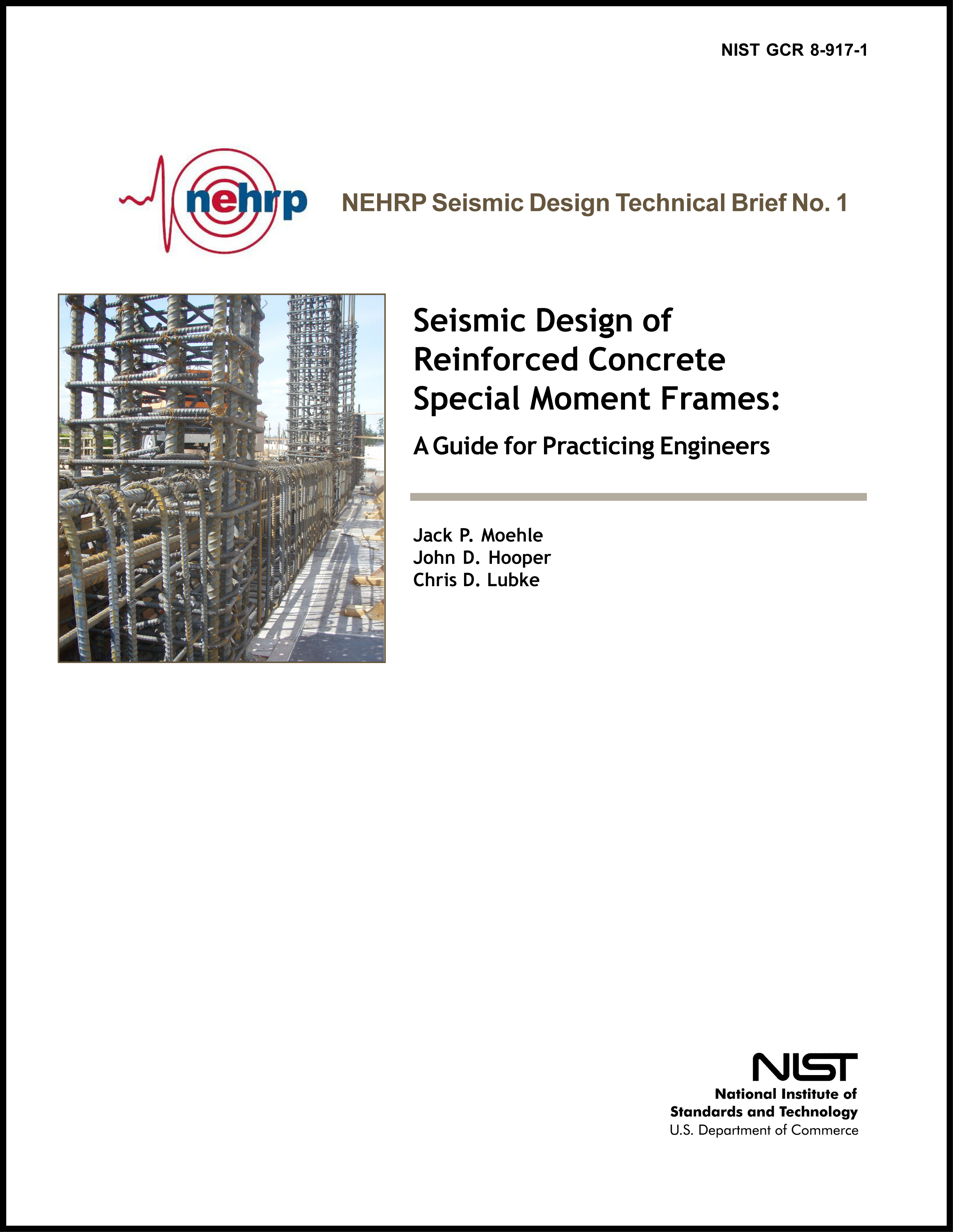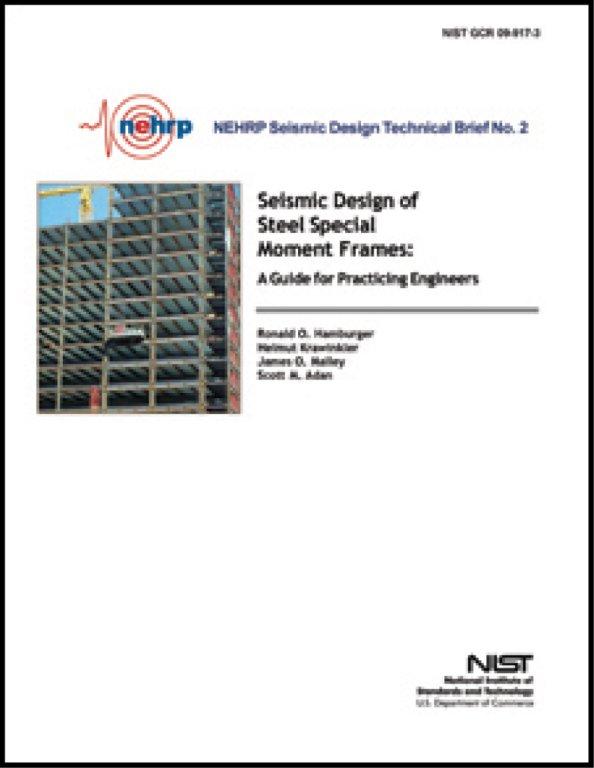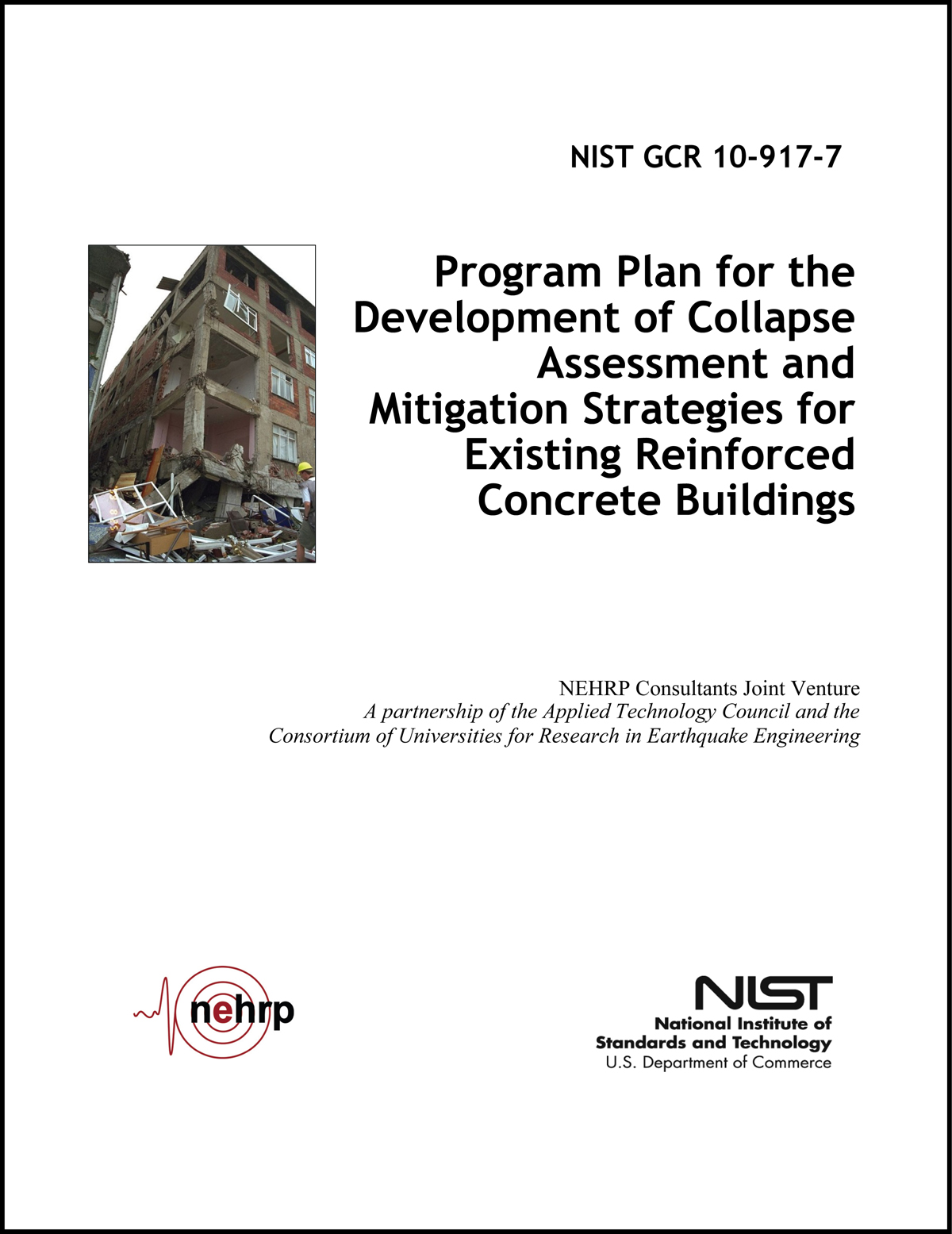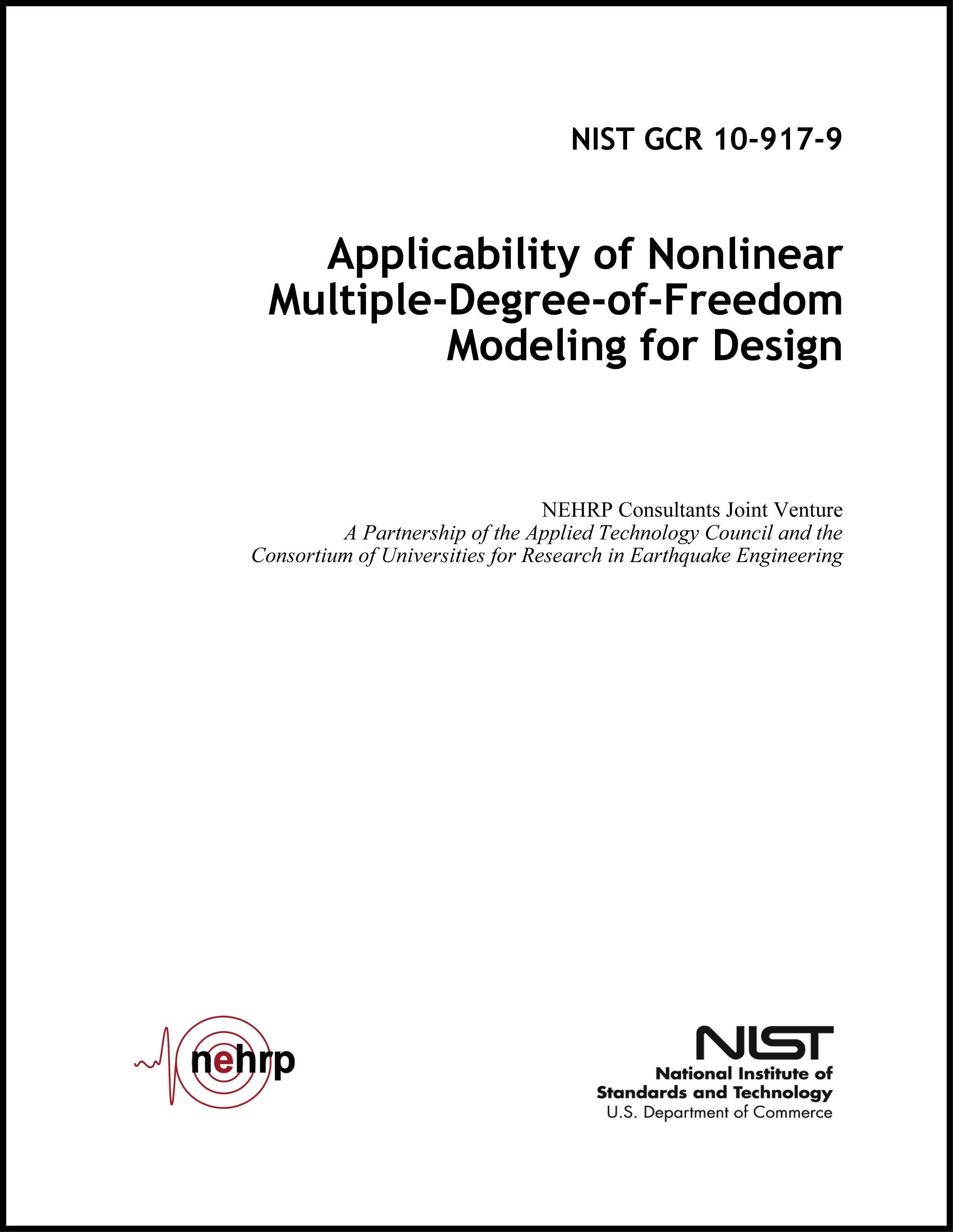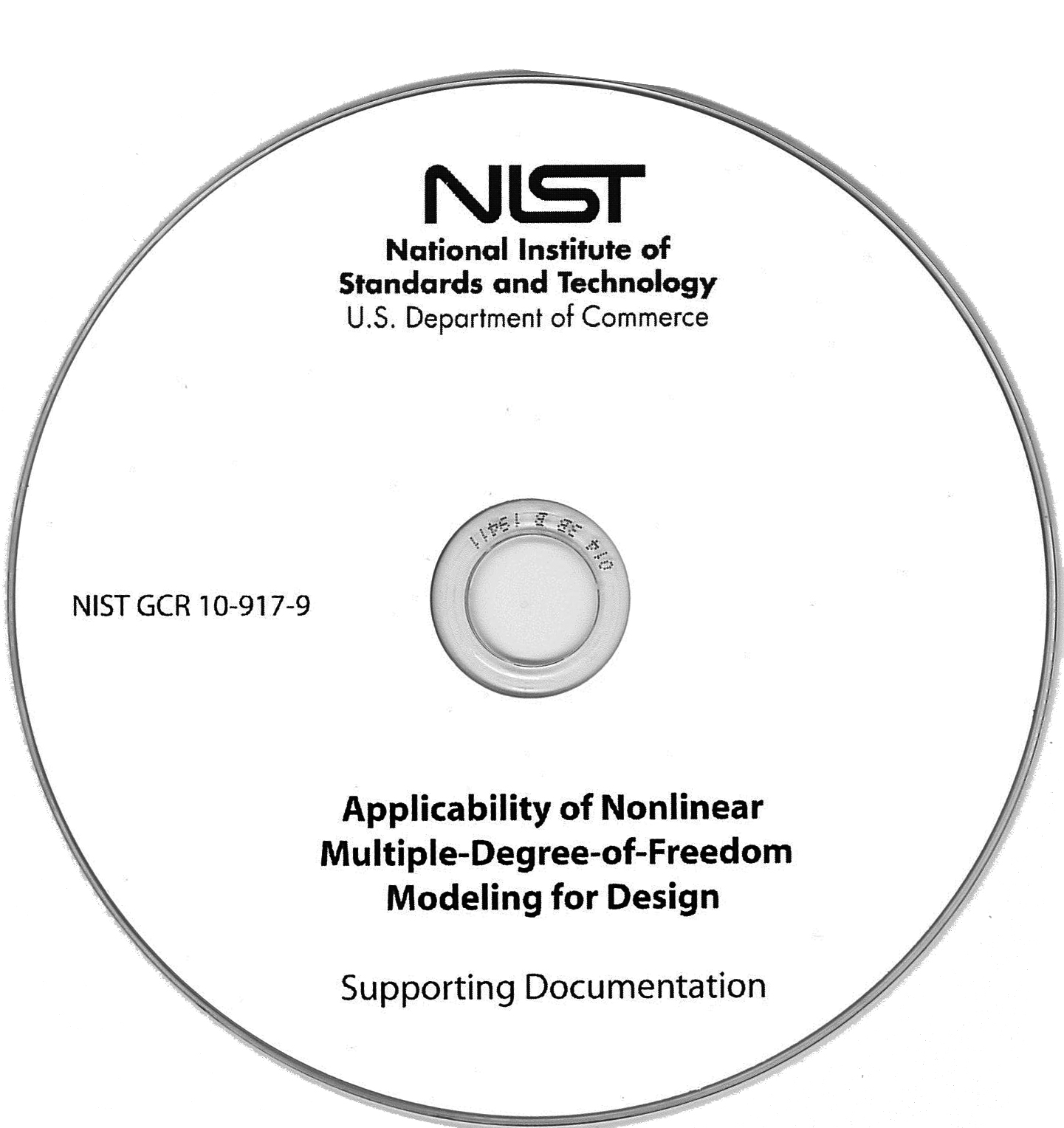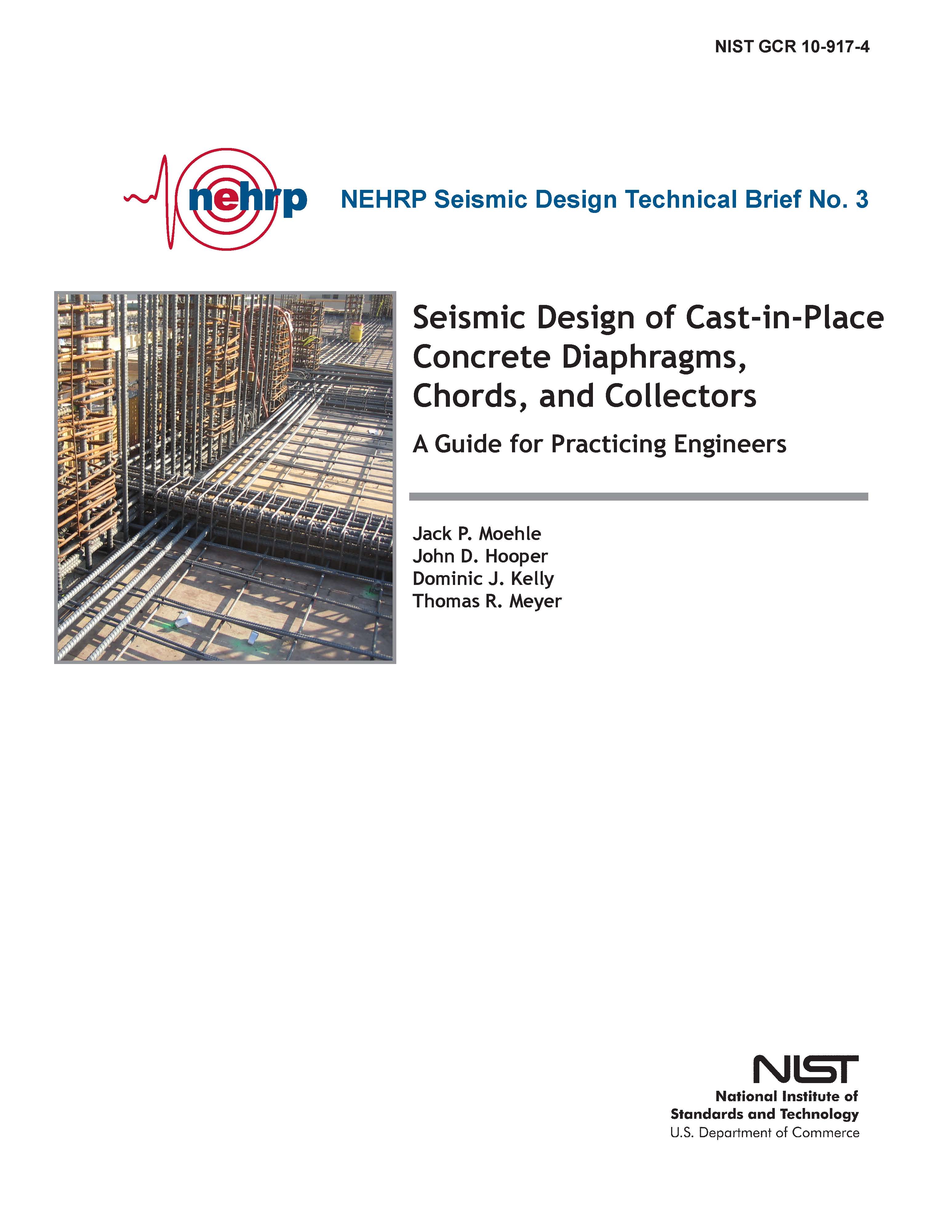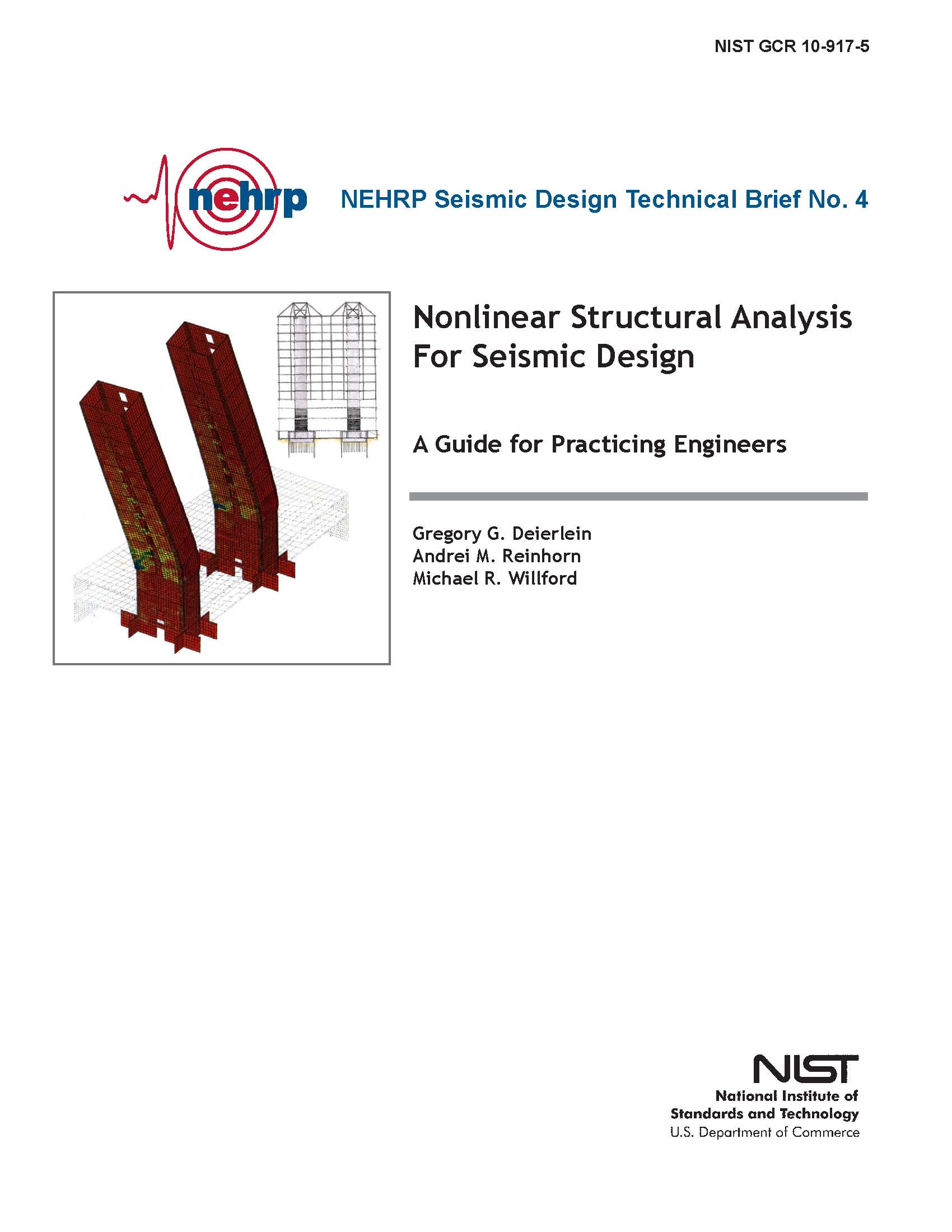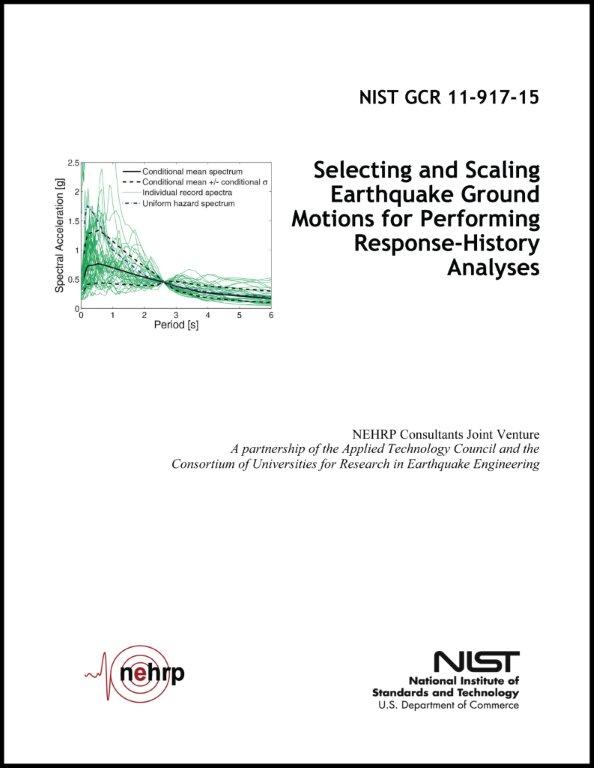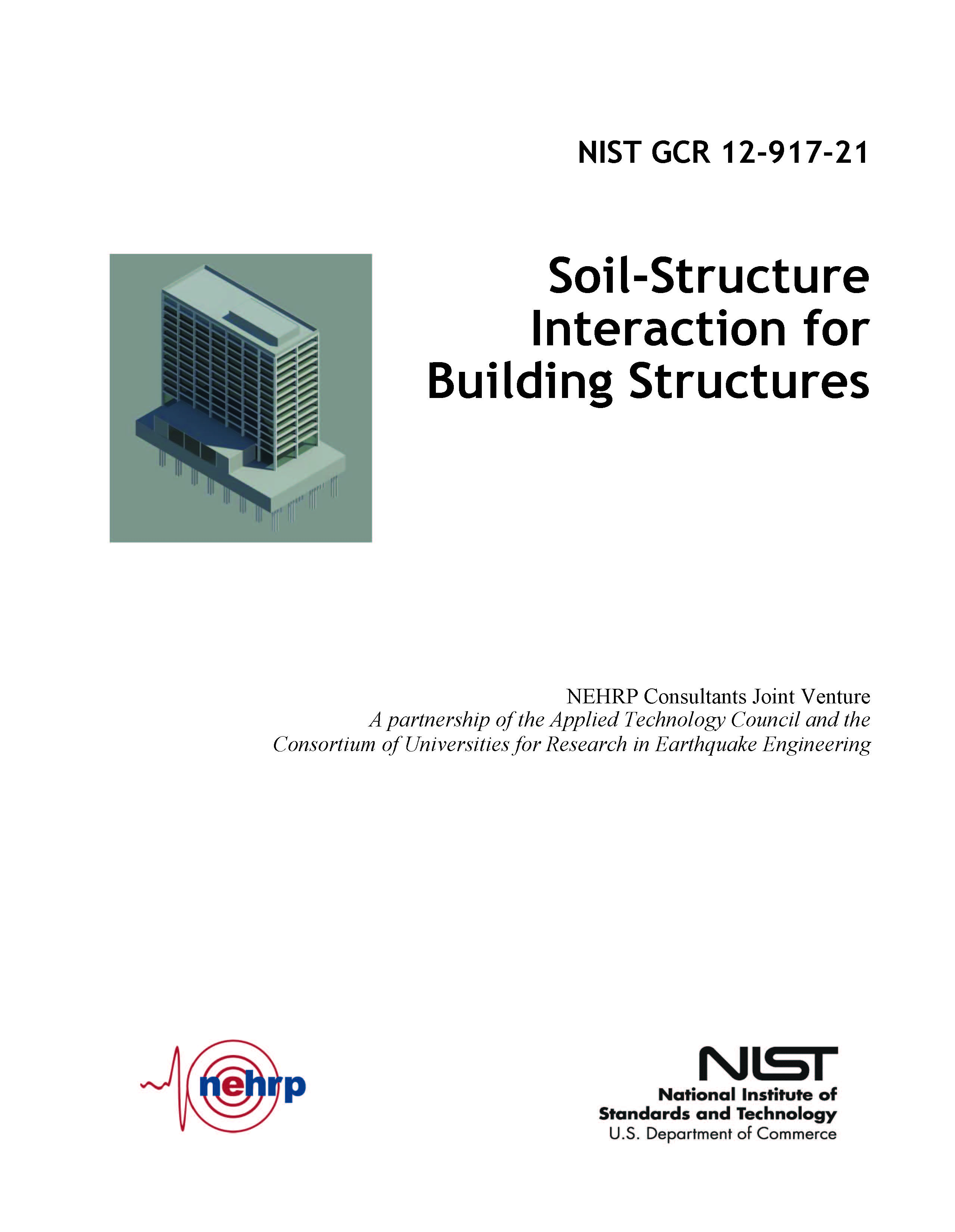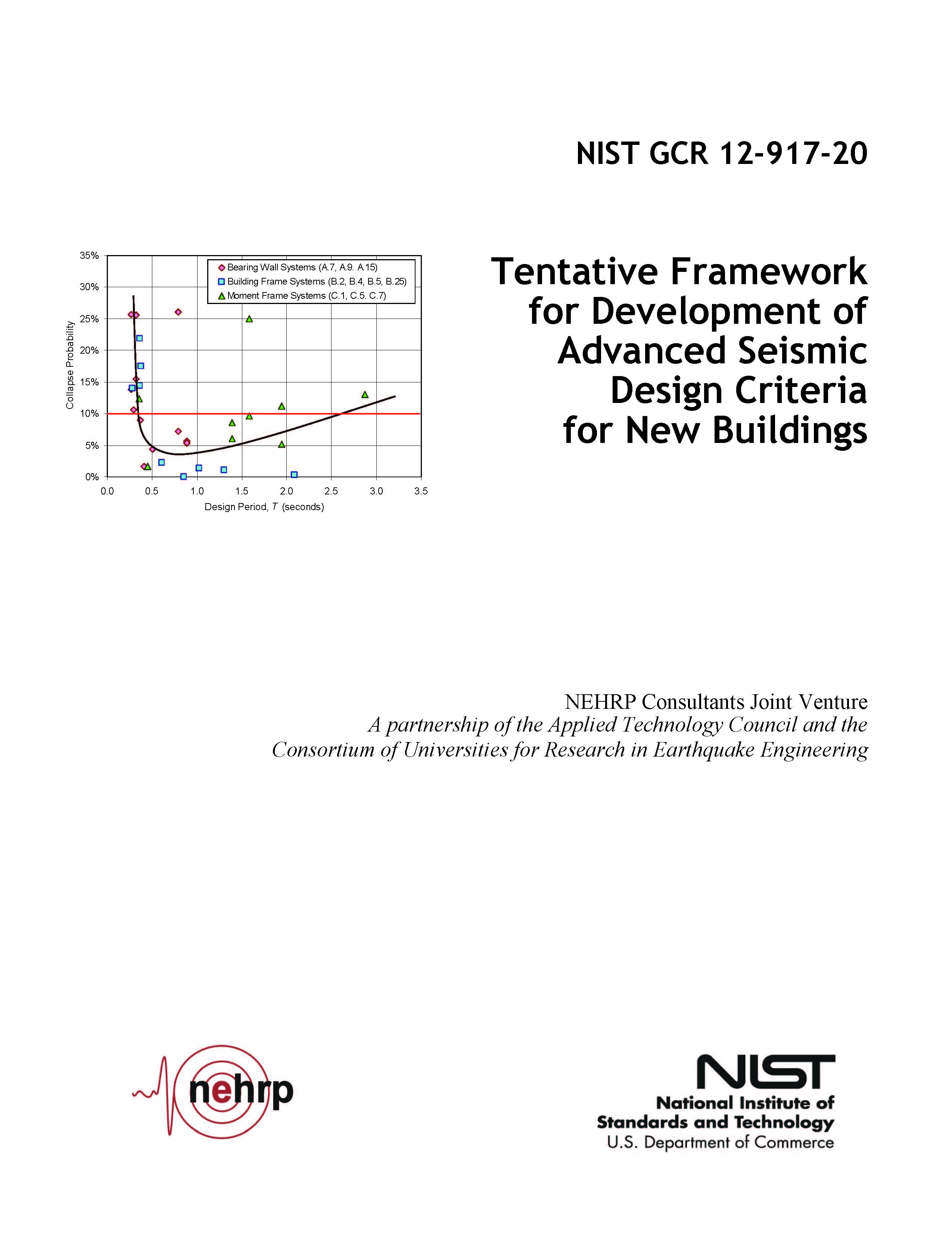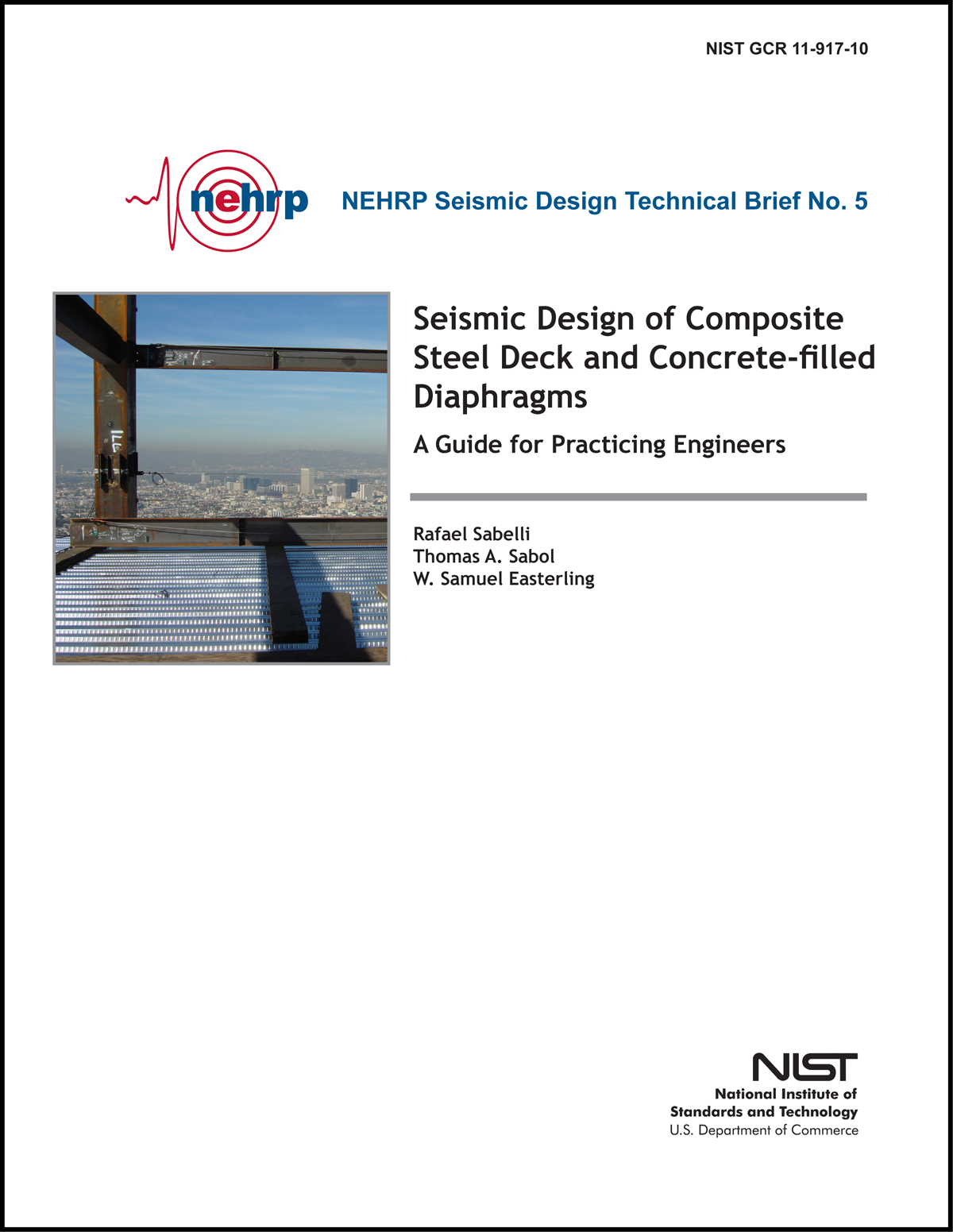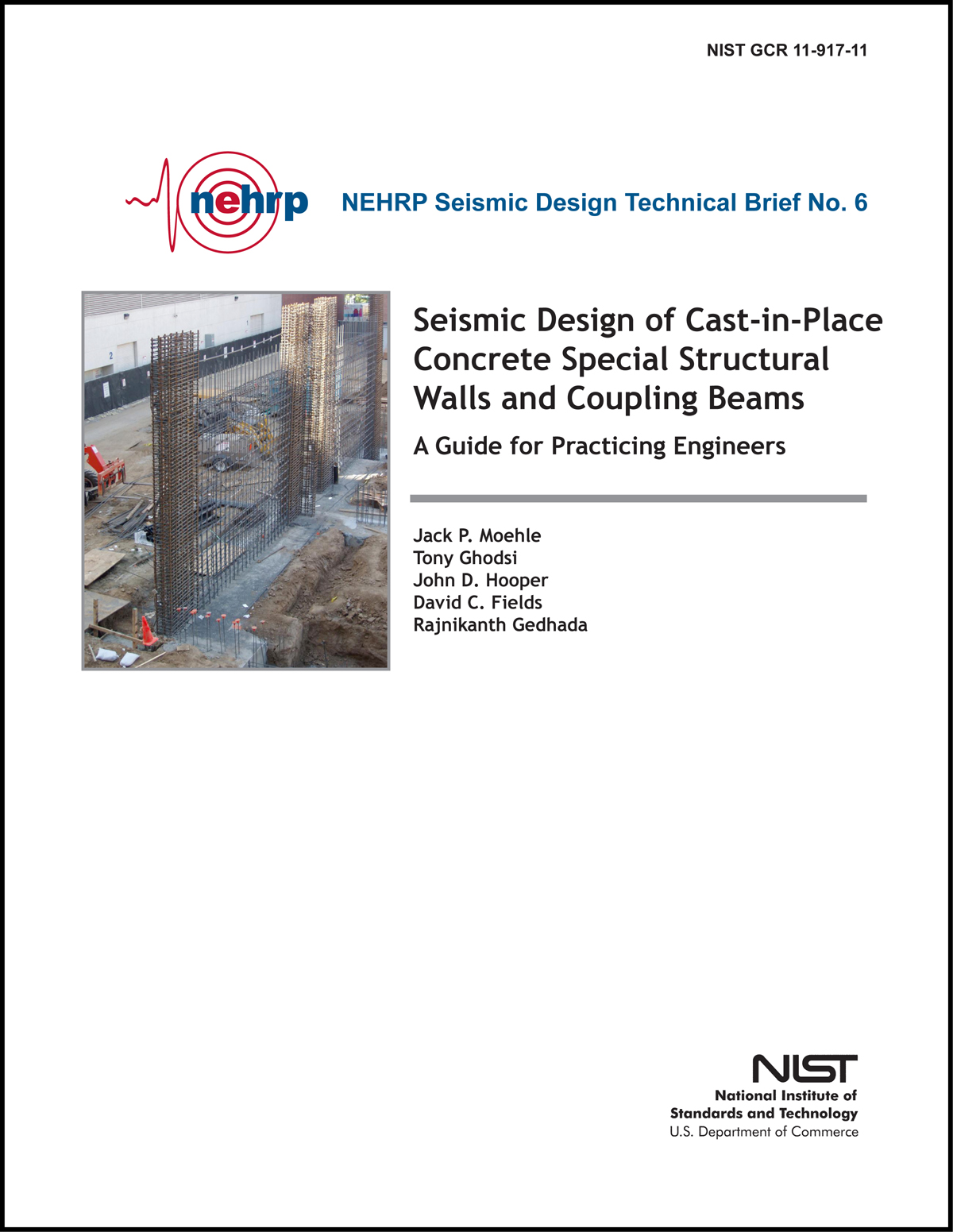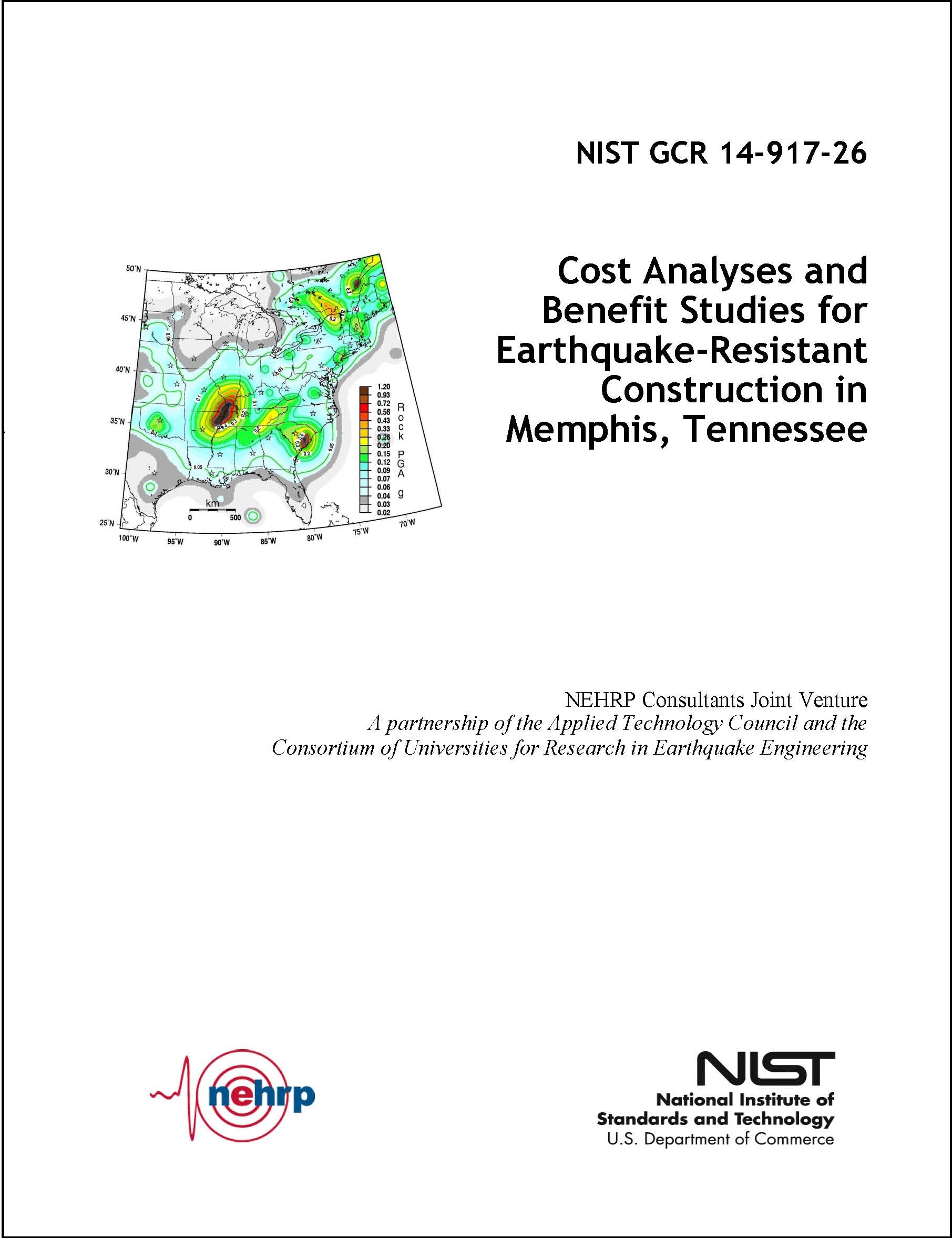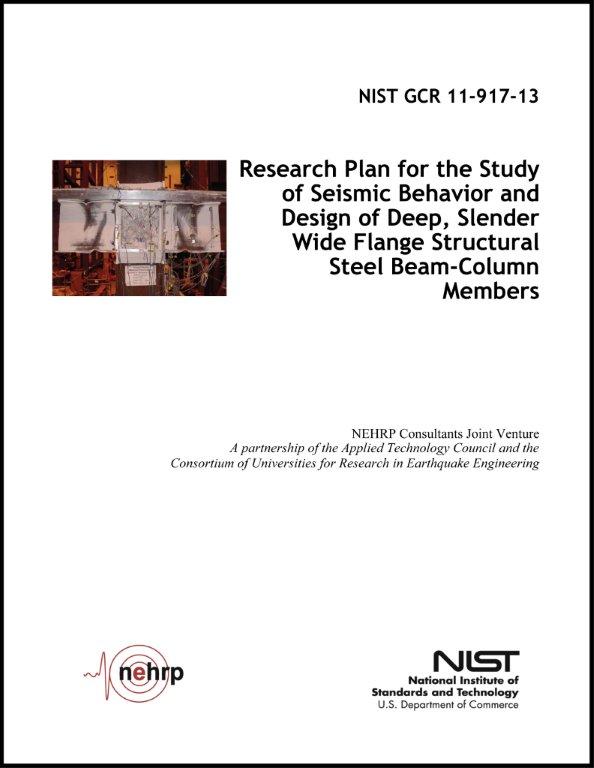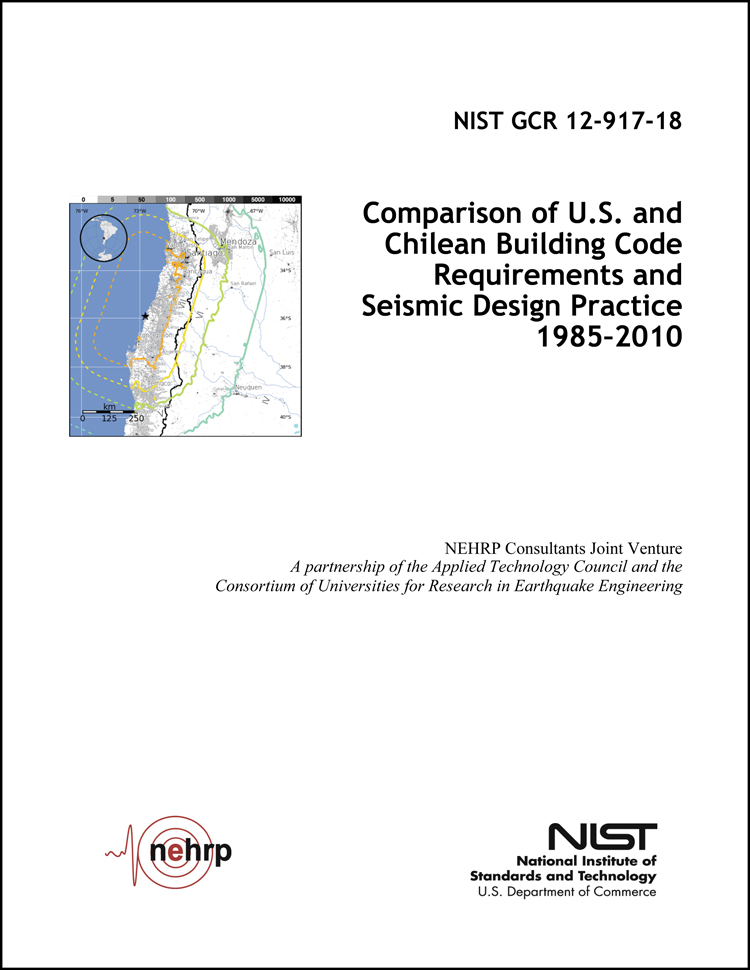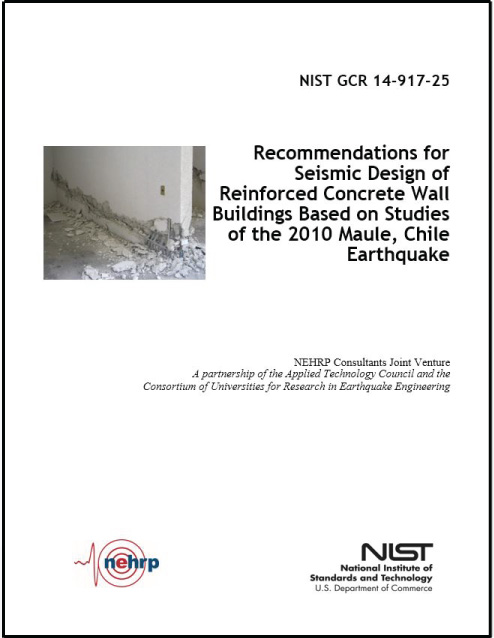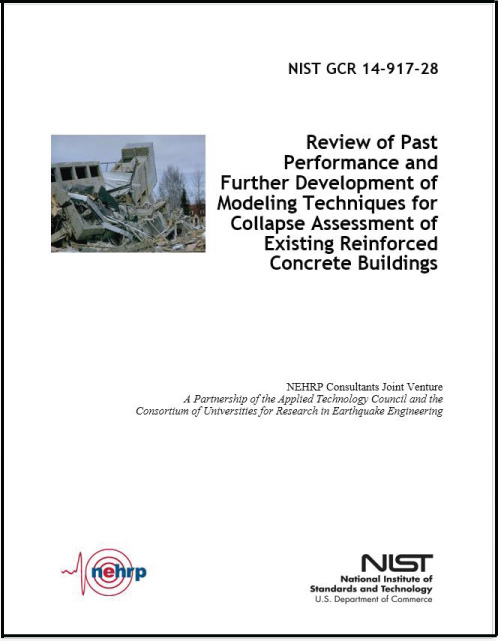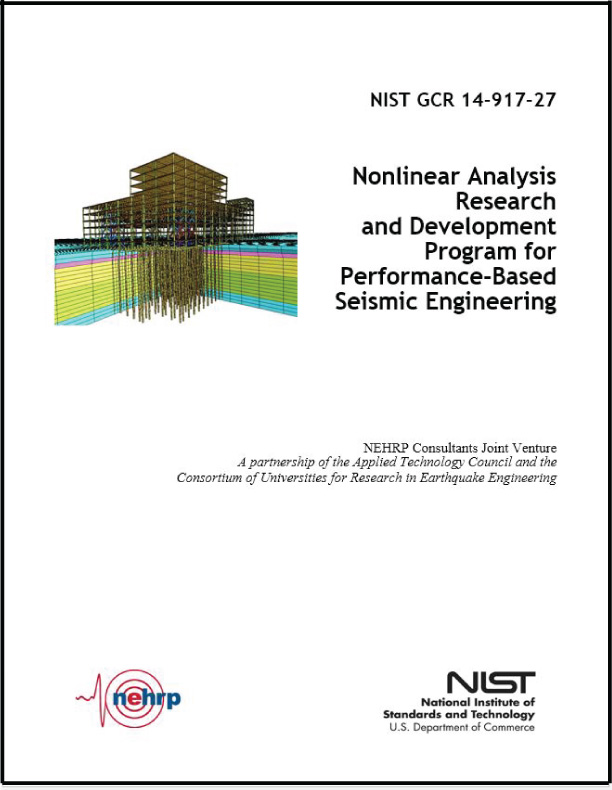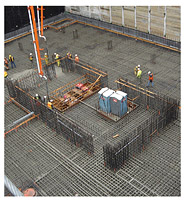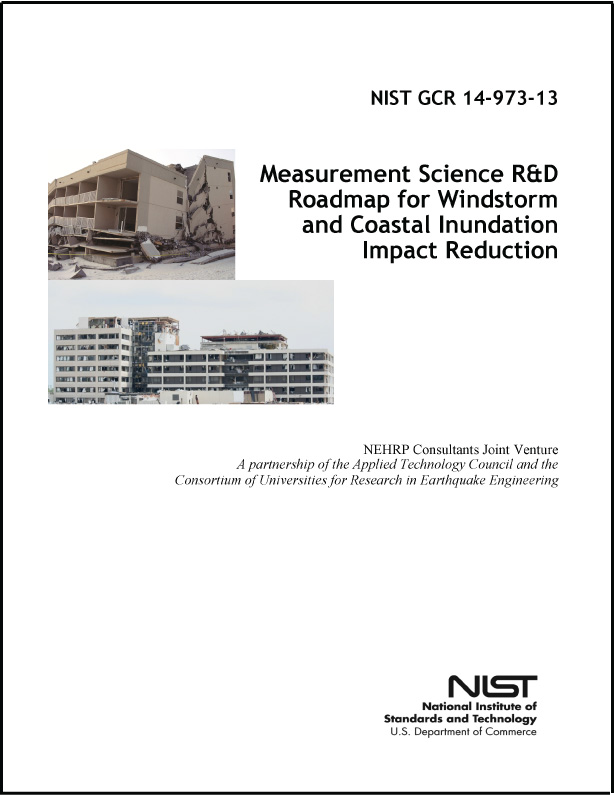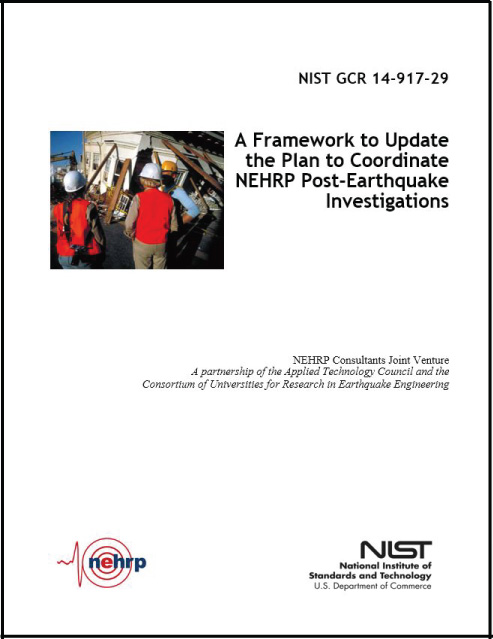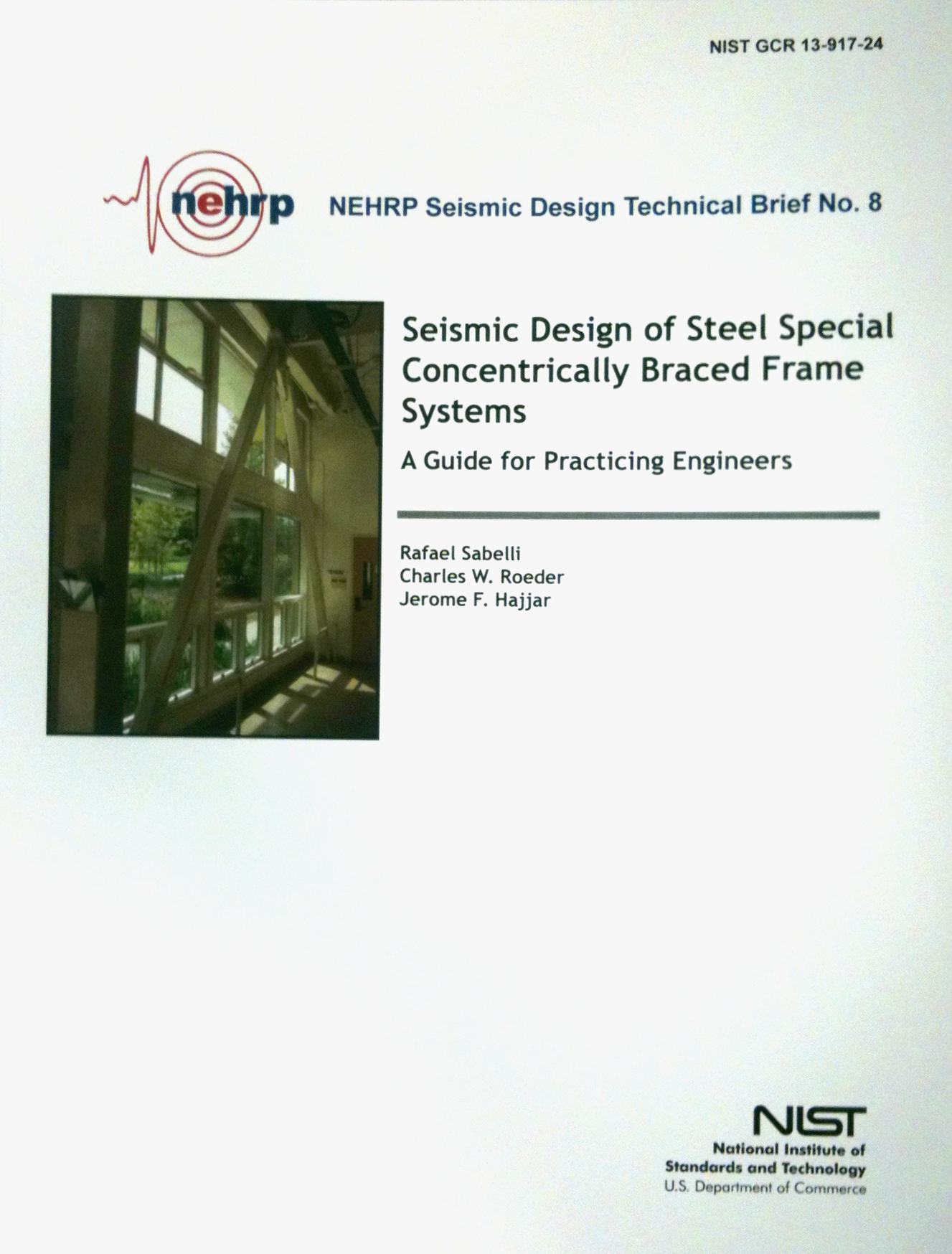NEHRP Consultants Joint Venture
NEHRP Consultants Joint Venture, A Partnership of the Applied Technology Council and Consortium of Universities for Research in Earthquake Engineering
The Applied Technology Council (ATC) and the Consortium of Universities for Research in Earthquake Engineering (CUREE) formed the NEHRP Consultants Joint Venture, a partnership of ATC and CUREE, in order to conduct the National Institute of Standards and Technology (NIST)-funded National Earthquake Hazards Reduction Program (NEHRP) Earthquake Structural and Engineering Research Contract, which was awarded in September 2007.
Under this 5-year contract, the NEHRP Consultants Joint Venture conducted a broad problem-focused research, knowledge development, synthesis, and technology transfer program for NIST, lead federal agency for NEHRP. The purpose of the NIST contract is to develop a partnership with practitioners and research institutions that will be used to implement the program, which follows a roadmap prepared by ATC for NIST in 2003 and published in the ATC-57 report, The Missing Piece: Improving Seismic Design and Construction Practices.
Thirty-four task order projects were awarded under this contract. For more information about the details of this work, see the NEHRP Consultants Joint Venture website.
NIST Task Order Projects awarded are as follows:
|
|
Task Order 1 (ATC-76-1 Project), Quantification of Building System Performance and Response Parameters. The primary objective of this project is to beta test the methodology developed in the ATC-63 project that establishes a consistent and rational procedure for developing building system performance and response parameters (R, Cd, Ω0) for the linear design methods traditionally used in current building codes. Beta testing will be conducted on three structural systems: (a) special reinforced concrete shear walls; (b) special reinforced masonry shear walls; and (c) special steel concentrically braced frames. |
|
|
Task Order 2 (ATC-76-2 Project), Development of Seismic Design Guidelines for Port and Harbor Facilities - Phase I. The primary objective of this project is to perform the first phase of work required to produce a seismic design guidelines document for critical port and harbor facilities, keying on containerized shipping activities. Both new construction and improved existing construction will be considered. The guidelines document will focus on improved earthquake survivability for containerized shipping functions, considering system-wide processes and functionality. |
|
|
Task Order 3 (ATC-76-3 Project), Development of Technical Briefs on Structural Design Issues. The primary objective of this project is to produce two new techbrief documents, one addressing the design, specification, and construction of Special Steel Moment Frames and one addressing the design, specification, and construction of Special Reinforced Concrete Moment Frames. |
|
|
Task Order 4 (ATC-76-4 Project), Quantification of Building System Performance and Response Parameters. A continuation of Task Order 1, the objective of this project is to conduct beta testing of the ATC-63 methodology on three additional structural systems: (a) ordinary reinforced masonry shear walls; (b) ordinary reinforced concrete moment frames; and (c) ordinary steel moment frames. |
|
|
Task Order 5 (ATC-76-5 Project), Integration of Collapse Risk Mitigation Standards and Guidelines for Older Reinforced Concrete Buildings into National Standards - Phase I. The National Science Foundation, awarded a George E. Brown, Jr. Network for Earthquake Engineering Simulation (NEES) Grand Challenge project to the Pacific Earthquake Engineering Research (PEER) Center that uses NEES resources to develop comprehensive strategies for identifying seismically hazardous older concrete buildings, enable prediction of the collapse of such buildings and to develop and promote cost-effective hazard mitigation strategies for them. Products from this research effort are expected to soon be available, creating an opportunity for transferring past and present research results into design practice. Key work to be carried out under this task order includes: (1) formal communication with representatives from the NSF-funded Grand Challenge research project, Mitigation of Collapse Risks in Older Reinforced Concrete Buildings, (2) review of available sources in the literature regarding current research and practice related to older concrete buildings; (3) preparation of a technical report summarizing current standards of practice and available information; and (4) preparation of an updated Project Work Plan for completing the eventual guidance document. |
|
|
Task Order 6 (ATC-76-6 Project), Improved Nonlinear Static Seismic Analysis Procedures - Multiple-Degree-of-Freedom Modeling. The primary objective of this project is to address the second of three unresolved issues from FEMA 440, which is related to improvement of simplified nonlinear modeling considering multiple-degree-of-freedom effects. Work will include an extensive literature search to identify the body of research on nonlinear static analysis and consideration of MDOF effects that has been generated since FEMA 440 was published. |
|
|
Task Order 7 (ATC-76-7 Project), Development of Technical Brief on Structural Design Issues - Reinforced Concrete Diaphragm Systems. The primary objective of this task is to produce a new techbrief addressing the analysis and design of reinforced concrete diaphragms for buildings. This techbrief will be a synthesis of model building code requirements and leading practitioner-recognized techniques, resulting in clear and concise analysis, design, and construction guidance for use by structural engineers. |
|
|
Task Order 8 (ATC-76-8 Project), Development of Technical Brief on Structural Design Issues - Guidelines for Performing Nonlinear Structural Analysis. The primary objective of this task is to produce a new techbrief addressing the application of current commercially available software and other analytical tools for conducting nonlinear structural analysis modeling for seismic design of buildings. This techbrief will be a synthesis of nonlinear structural modeling and analysis techniques that have been developed by researchers and leading practitioners, resulting in clear and concise analytical guidance for use by structural engineers. Both nonlinear static procedures (NSPs) and nonlinear dynamic procedures (NDPs) will be considered for inclusion in the techbrief, along with such issues as joint modeling techniques, damping, energy dissipation, strength and stiffness degradation, P-Delta effects, and techniques to enhance accuracy and mathematical stability. |
|
|
Task Order 9 (ATC-82 Project), Improved Procedures for Selecting and Scaling Earthquake Ground Motions for Performing Time-History Analyses. The primary objective of this task is to develop guidance for selecting, generating, and scaling earthquake ground motions for effective use in performing response history analyses, such that ground motion uncertainties do not dominate the accuracies of these analyses. The project should also identify areas of research that are needed to further improve the guidance that is developed. |
|
|
Task Order 10 (ATC-83 Project), Improved Procedures for Characterizing and Modeling Soil-Structure Interaction for Performance-Based Seismic Engineering. The primary objective of this task is to develop guidance for implementing soil-structure interaction in response history analyses, such that input ground motions accurately reflect both site geotechnical conditions and foundation impedance associated with the building under consideration. The project should also identify areas of research that are needed to further improve the guidance that is developed. |
|
|
Task Order 11 (ATC-84 Project), Improved Structural Response Modification Factors for Seismic Design of New Buildings - Phase I. The primary objective of this task is to develop a framework for alternative formulations for response modification factors (R, Cd, Ω0) that consider the interdependency of period, ductility, overstrength, site classification, seismic design category, and/or occupancy category. Under this project, analytical studies will be carried out to define the seismic response modification factors in variable terms in order to facilitate uniform risk. Areas of research that are needed to further improve alternative response modification factors will also be identified. |
|
|
Task Order 12 (ATC-85 Project), Assessment of ASCE 41 First Generation Performance-Based Seismic Design Methods for New Buildings in High Seismic Regions, Phases I - III. NIST has started work on a project to benchmark ASCE 41 first-generation performance-based seismic design procedures as applied to new building structures designed in accordance with ASCE/SEI 7-05, Minimum Design Loads for Buildings and Other Structures (ASCE 7). The primary objective of this task is to engage a Peer Review Panel (PRP) to provide technical support for the on-going NIST project by providing guidance and advice on technical detail and project scope, seismic hazard analysis, ground motion scaling for varying return periods, nonlinear dynamic analysis, structural behavior, design of building structures, and peer review services.
|
|
|
Task Order 13 (ATC-76-9 Project), Full-Scale Testing of Reinforced Concrete Subassemblies for Collapse Resistance. The primary objective of this task is to perform full-scale testing of two reinforced concrete specimens in support of internal NIST research on modeling of progressive collapse of concrete structures. NIST is obtaining experimental data on the collapse potential of reinforced concrete structures to verify and calibrate its modeling. The testing, conducted on two specimens, will simulate the loss of support of a middle column while end columns remain in place. Surrogate gravity loading and large displacements will be imposed on the beam and extensive data collection performed. |
|
|
Task Order 14 (ATC-87 Project), Development of Technical Brief on Structural Design Issues - Composite Steel Deck Diaphragm Systems. The primary objective of this task is to produce a new Seismic Design Technical Brief addressing the analysis, design, and detailing of steel deck diaphragms for steel buildings that must resist lateral forces from inertial effects in earthquakes. This Seismic Design Technical Brief will be a synthesis of model building code requirements and leading practitioner-recognized techniques, resulting in clear and concise analysis, design, and construction guidance for use by practicing structural engineers. Its scope largely excludes metal-deck-only diaphragms, a topic planned for a future Technical Brief. |
|
|
Task Order 15 (ATC-88 Project), Development of Technical Brief on Structural Design Issues - Special Reinforced Concrete Shear Walls. The primary objective of this task is to produce a new Seismic Design Technical Brief addressing the analysis, design, and detailing of special reinforced concrete shear walls that must resist lateral forces from inertial effects in earthquakes. This Seismic Design Technical Brief will be a synthesis of model building code requirements and leading practitioner-recognized techniques, resulting in clear and concise analysis, design, and construction guidance for use by practicing structural engineers. |
|
|
Task Order 16 (ATC-89 Project), Cost-Benefit Analysis of Codes and Standards for Earthquake-Resistant Construction in Selected U.S. Regions - Phase I. The primary objective of this task is to perform trial designs for selected archetypical building types in order to estimate relative costs and benefits associated with earthquake-resistant construction in the mid-Mississippi River Valley region. |
|
|
Task Order 17 (ATC-90 Project), Seismic Behavior and Design of Deep, Slender Wide-Flange Structural Steel Beam-Column Members Phase I. The primary objective of this task is to develop a comprehensive long-range program plan to research the seismic behavior of deep, slender wide-flange structural steel beam-columns in steel frames. Research studies shall concentrate on member-level and system-level performance and consist of both experimental and analytical studies. This document represents the first phase of work required to provide nationally accepted guidelines for designing and assessing the seismic performance of wide-flange beam columns in steel frames. |
|
|
Task Order 18 (ATC-91 Project), Assessment of Nonlinear Seismic Analysis of Structures Based on Modal Superposition. The primary objective of this task is to engage a Project Review Panel (PRP) to provide technical support of this on-going NIST project to develop a new analytical tool to increase the accuracy and efficiency in nonlinear structural analysis, giving the designer increased confidence in the method, by providing subject matter expert assessment on the technical merit and potential outcomes of the project. |
|
|
Task Order 19 (ATC-92 Project), Comparison of Present Chilean and U.S. Model Building Code Seismic Provisions and Seismic Design Practices. The primary objective of this task is to analyze and compare present (post-1990) seismic design provisions in Chilean building codes with applicable U.S. model building code and standard provisions for new buildings, principally ASCE 7 and ACI 318. This work will detail where the Chilean and U.S. code provisions are alike and where they are different, including differences in design response spectra in Chilean seismic zones and ASCE 7. Work will also document similarities and differences in seismic analysis and design practice for new buildings as performed in the United States and Chile. |
|
|
Task Order 20 (ATC-93 Project), Ground Motion and Building Performance Data from the 2010 Chile Earthquake. The primary purpose of this task is to develop a cost-effective and event-specific web-based data repository for the Chile earthquake that is based upon publicly available information that is available from U.S. and Chilean post-earthquake reconnaissance team members. |
|
|
Task Order 21 (ATC-94 Project), Analysis of Seismic Performance of Reinforced Concrete Buildings in the 2010 Chile Earthquake, Including Effects of Non-Seismic-Force-Resisting Building Structural Elements. The primary objective of this task is to: (1) Conduct an evaluation of critical issues in the design of reinforced concrete walls and development of improved wall design requirements; (2) Conduct research on the effects of non-seismic-force-resisting building structural elements on building performance; (3) Engage a Project Review Panel to provide technical support for the NIST BFRL research project, Evaluation of Reinforced Concrete Wall Models for Seismic Response; and (4) Engage a Project Review Panel to provide technical support for the NIST BFRL research project, Observations from the 2010 Chilean Earthquake and their effects on U.S. Building Code Seismic Provisions for Structural Irregularities and Vertical Design Lateral Force Distribution for Mid- to High-Rise Buildings. |
|
|
Task Order 22 (ATC-95 Project), Development of a Collapse Indicator Methodology for Existing Reinforced Concrete Buildings. The primary objective of Task Order 22 is to initiate the first phase of work related to the development of a collapse indicator methodology, which is a key outcome of the recommended program. Work to be carried out under this task order includes: (1) project management and oversight, including the selection and confirmation of key project personnel; (2) preparation of a Project Work Plan; (3) update of a NIST project description; (4) identification of critical concrete building deficiencies and mitigation strategies; (5) selection of building prototypes; (6) identification of ground motions and component models for collapse simulation; (7) preparation of a project report; and (8) presentation of in-person progress reviews with NIST representatives. |
|
|
Task Order 23 (ATC-96 Project), Analysis, Modeling, and Simulation for Performance-Based Seismic Engineering. The primary objective of this task is to develop a comprehensive, concise, long-range Nonlinear Analysis Study and Development Program to establish best-practice guidelines for practitioners to conduct nonlinear analysis, structural modeling, and computer simulation for seismic applications and to support the on-going the development and implementation of PBSE. The plan will focus on analysis software tools that are amenable to use in engineering practice, including both commercial and research software that is currently available or likely to become available for practice in the near future. The project will also explore important needs to help establish a road map to analysis capabilities that may require longer term efforts to achieve. |
|
|
Task Order 24 (ATC-97 Project), Development of Technical Brief on Structural Design Issues – Seismic Design of Reinforced Concrete Mat Foundations. The primary objective of Task Order 24 is to produce a new techbrief addressing Reinforced Concrete Mat Foundations (RCMF) for structures that must resist lateral forces resulting from inertial effects in earthquakes. This techbrief will be a synthesis of model building code requirements and leading practitioner-recognized techniques, resulting in clear and concise analysis, design, and construction guidance for use by practicing structural engineers. |
|
|
Task Order 25 (ATC-98 Project), Use of High-Strength Flexural Reinforcement in Reinforced Concrete Seismic Design. The primary objective of this task is to perform the work required to study and make recommendations concerning the utilization of high-strength steel reinforcing bars in concrete structures subjected to earthquake ground motion. Work will investigate the potential savings in construction costs and time, and will review available information in the literature regarding potential difference in behavior. |
|
|
Task Order 26 (ATC-100 Project), Preparation of a Research and Development Roadmap for NIST’s Windstorm and Coastal Inundation Impact Reduction Program. The primary objective of this task is to prepare a research and development roadmap for NIST’s Windstorm and Coastal Inundation Impact Reduction Program. This roadmap shall incorporate a broad strategic approach and objectives for buildings, structures, and lifelines, including both new and existing construction. This approach shall adapt the ATC-57 framework and follow the subject areas and program elements outlined in the preceding Background statement. |
|
|
Task Order 27 (ATC-101 Project), Development of Updated NEHRP Post-Earthquake Investigations Strategy: Phase I. The primary objective of this task is to provide an updated replacement plan for USGS Circular 1242 that outlines the data coordination, collection, management, and analysis actions required of the NEHRP agencies (FEMA, NIST, NSF, USGS), working in partnership with other relevant national organizations (e.g., ASCE, EERI) following major future earthquakes. |
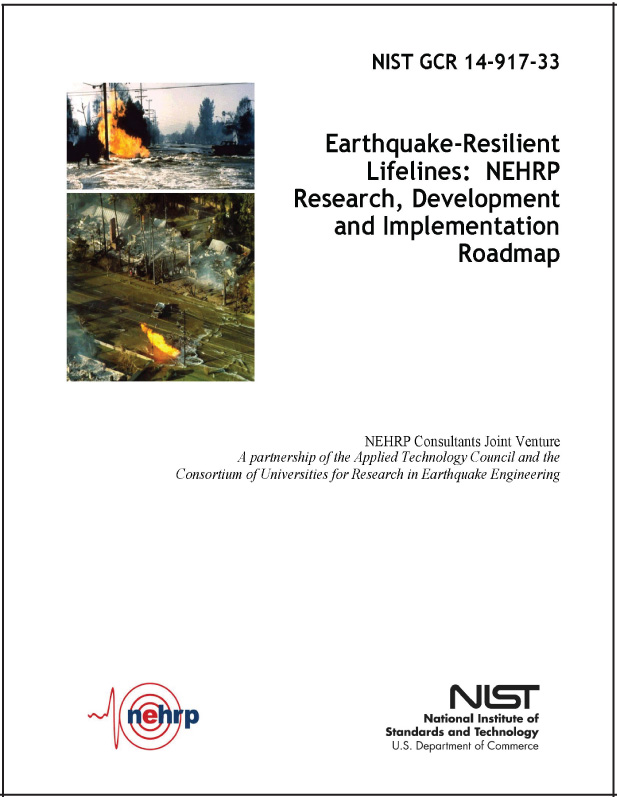 |
Task Order 28 (ATC-102 Project), Development of Earthquake-Resilient Lifelines: NEHRP Research and Implementation Roadmap, Phase I. The primary objective of this task is to develop a 10-year research, outreach, and implementation roadmap for generating new model earthquake-resilient design and construction standards for key lifeline systems and components. It is envisioned that, once developed, these standards would improve national resilience through adoption as voluntary consensus standards for community resilience at the state and local levels throughout the United States. |
|
|
Task Order 29 (ATC-103 Project), Development of Technical Brief on Structural Design Issues – Seismic Design of Steel Special Concentrically Braced Frame Systems. The primary objective of this task is to produce a new techbrief addressing Steel Special Concentrically Braced Frames (SCBF), including buckling restrained braced frames (BRBF). This techbrief will be a synthesis of model building code requirements and leading practitioner-recognized techniques, resulting in clear and concise analysis, design, and construction guidance for use by practicing structural engineers. |
|
|
Task Order 30 (ATC-104 Project), Assessment of the Performance of Slender Reinforced Concrete Walls Under Significant Lateral Loads. The primary objective of this task is to engage a small committee to provide technical support for this NIST research project. This committee will provide subject matter expert guidance to improve the technical detail and outcome of the project scope. It will provide technical support on wall testing, evaluation of test results, evaluation of nonlinear structural behavior of walls, assessment of results and conclusions, and review of proposed codes and standards changes.
|
|
|
Task Order 31 (ATC-105 Project), Development of Annual Report for National Earthquake Hazards Reduction Program Covering Fiscal Year 2012. The primary objective of this task is provide critical portions of a NEHRP annual report covering NEHRP activities during fiscal year 2012, covering the period of 1 October 2011 through 30 June 2012.
|
|
|
Task Order 32 (ATC-106 Project), Seismic Behavior and Design of Deep, Slender Wide-Flange Structural Steel Beam-Column Members: Phase 2 Experimental Evaluation. The primary objective of this task order is to develop and implement a testing program to study the behavior of plastic hinges in idealized deep, slender wide-flange structural steel beam-columns undergoing significant cyclic loading. As specified in the Statement of Work (SOW) that accompanied the request for proposal, testing shall be conducted on beam-column sections that are not influenced by variations in member-end boundary conditions, which are idealized as rotationally and torsionally restrained or free.
|
|
|
Task Order 33 (ATC-107 Project), Wind Speed Mapping. The primary objective of this task is to prepare revised wind speed maps for submission as proposed changes to the next edition of the ASCE 7 engineering standard (ASCE 7-16). Updates to all existing ASCE 7-10 wind speed maps (in both the standard and the commentary to the serviceability appendix) are to be prepared that incorporate NIST nontropical wind analysis and four different return periods. A 10,000 year mean recurrence interval map for tropical cyclones only will also be developed specifically for a proposal to update the ICC 500 Standard for Design and Construction of Storm Shelters (ICC 2008). |
|
|
Task Order 34 (ATC-108 Project), Assessment of ASCE 41 First Generation Performance-Based Seismic Design Methods for New Building in High-Seismic Regions. The objective of this project is to engage groups of experts to provide technical support and, where needed, subject matter expert guidance to improve the resulting technical outcomes for an internal NIST project benchmarking ASCE 41 first-generation performance-based seismic design procedures as applied to new building structures designed in accordance with ASCE/SEI 7-05, Minimum Design Loads for Buildings and Other Structures (ASCE 7). A Project Review Panel (PRP) will provide guidance and advice on technical detail and project scope, seismic hazard analysis, ground motion scaling for varying return periods, nonlinear dynamic analysis, structural behavior, design of building structures, and peer review services. |

